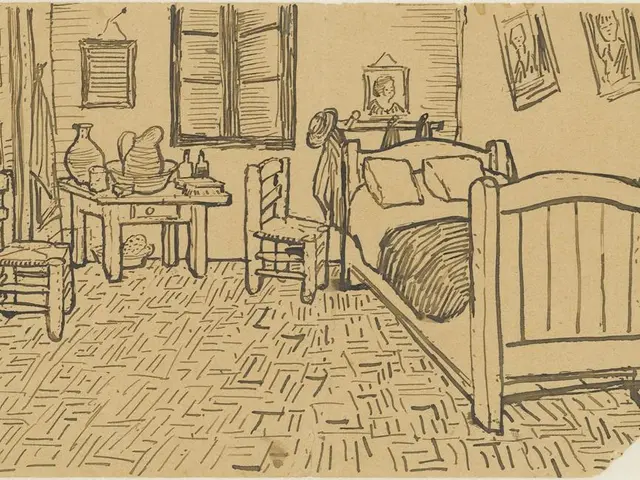Exploring Kazakh Weddings: Is Opulence the Focus or a Rivalry for Wealth?
Unveiling the Ever-Expensive Celebrations: A Comparative Look at Weddings in Kazakhstan and the United States
Hey there! Ever wondered why some weddings seem like they're straight out of a fairytale, while others leave you scratching your head? Well, it's all about cultural norms, socio-economic factors, and those darn expectations! Let's take a trip around the world and dive into the lavish world of Kazakh and American weddings.
In the heart of Central Asia, Kazakhstan, weddings can rival - and sometimes outshine - the extravagance of an average American wedding. It's as if time stopped in the bustling cities of Almaty or Astana and got swallowed up by a whirlwind of music, dance, and traditions that have been a part of Kazakh culture for ages. Now, this isn't necessarily a bad thing, but it does impose a significant financial burden on families eager to meet societal expectations.
One cannot help but marvel at the deep-rooted cultural values that prioritize grandeur. These celebrations are a joyous gathering of generations, honoring love, family, and heritage. But as we compare Kazakh wedding customs with global trends, particularly in the United States, it becomes crystal clear that cultural pressures around weddings heavily influence financial priorities.
Over in the land of the free and the home of the brave, the average wedding in New York clocks in at a staggering $63,000. Survey says? That's nearly the same amount required for a home down payment. In 47 U.S. cities, the average wedding costs more than an 8% down payment on a home. This financial strain has driven many young Americans to forgo the tradition in favor of more practical priorities, such as homeownership.
As you might've guessed, this trend hasn't yet reached Kazakhstan, where extravagant weddings continue to be a proud marker of social standing and success. This cultural fixation on lavish celebrations often means that ordinary families stretch their finances to the breaking point.
So, where do we draw the line between a celebration and excessive spending? The pandemic temporarily put a damper on the wedding scene, but as life returns to normal, so does the pressure to host grand events. As we move forward, it's time to rethink this culture of lavish spending.
Consider the story of Mukesh Ambani, Asia's richest man. When his son got hitched, Ambani spared no expense, dishing out $115 million for the wedding. He invited 1,200 guests and fed 51,000 ordinary Indians. While Ambani's wealth may be outrageous to some, his extravagant spending serves a purpose in India, contributing to the country's economy and strengthening business relationships.
For the average Kazakh family, however, replicating Ambani's wealth-flaunting extravagance is unattainable. And yet, they feel compelled to spend beyond their means to avoid social judgment. It's high time we recalibrate our values, placing the focus on long-term goals like education, property, and family needs. After all, weddings should be a joyous celebration, not a financial burden that lasts far beyond the honeymoon.
In the end, wealth and its visibility play different roles across cultures. What works in India may not work in Kazakhstan - and that's perfectly fine! As Kazakhstan's economy evolves, so too should its cultural expectations around celebrations. By finding a balance between tradition and practicality, Kazakh society can ensure that its weddings continue to be joyous and economically sensible.
P.S. This piece is a reflection of Begim Kutym, a PhD student at the Graduate School of Public Policy, Nazarbayev University, sharing her thoughts on the cultural and socio-economic impact of weddings in Kazakhstan. Remember, these are her thoughts and opinions, not necessarily those of The Astana Times.
Sources
- Astana Times
- Zoocasa
- Central Asian Survey
In today's context, the emphasis on grandeur in Kazakhstan's home-and-garden traditions, exemplified in their extravagant weddings, can impact families' finances significantly. On the other hand, the American lifestyle prioritizes practicality, with average wedding costs approaching the cost of an 8% down payment on a home, leading some to forgo traditions in favor of long-term goals like homeownership. Hence, reevaluating cultural priorities in both societies may help restore a balance between tradition and practicality, ensuring future celebrations remain both joyous and economically sensible, particularly in the home-and-garden domain.





